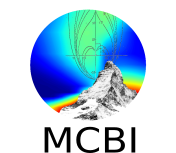Speaker
Description
Beam intensities required by the High-Luminosity (HL-) LHC can presently not be delivered by the CERN SPS, mainly due to beam loading, but also due to a longitudinal multi-bunch instability. This instability is known to be triggered by the third harmonic passband of the 200 MHz multi-cell accelerating structures at an intensity threshold three times below the nominal LHC intensity in the 200 MHz single RF mode. In this case it has not been possible to sufficiently suppress the coupled bunch instability by merely damping the quality factors (Qs) of the HOMs, even when deploying near-to-optimal HOM-couplers. Additional mitigation of the large geometry factors (R/Qs) is required by a slight change of structure, for example in the form of non-resistive, resonant elements that couple to the HOMs, but must leave the fundamental accelerating mode untouched. These mitigation techniques are developed using coupled resonator theory and the electromagnetic simulation codes CST and ACE3P. Their performance is confirmed by RF bench measurements using the probe and perturbation methods. The impact of the HOM suppressors on the accelerating mode is measured as well and the thorough study is completed with multi-physics considerations like RF voltage breakdown and surface heating.
